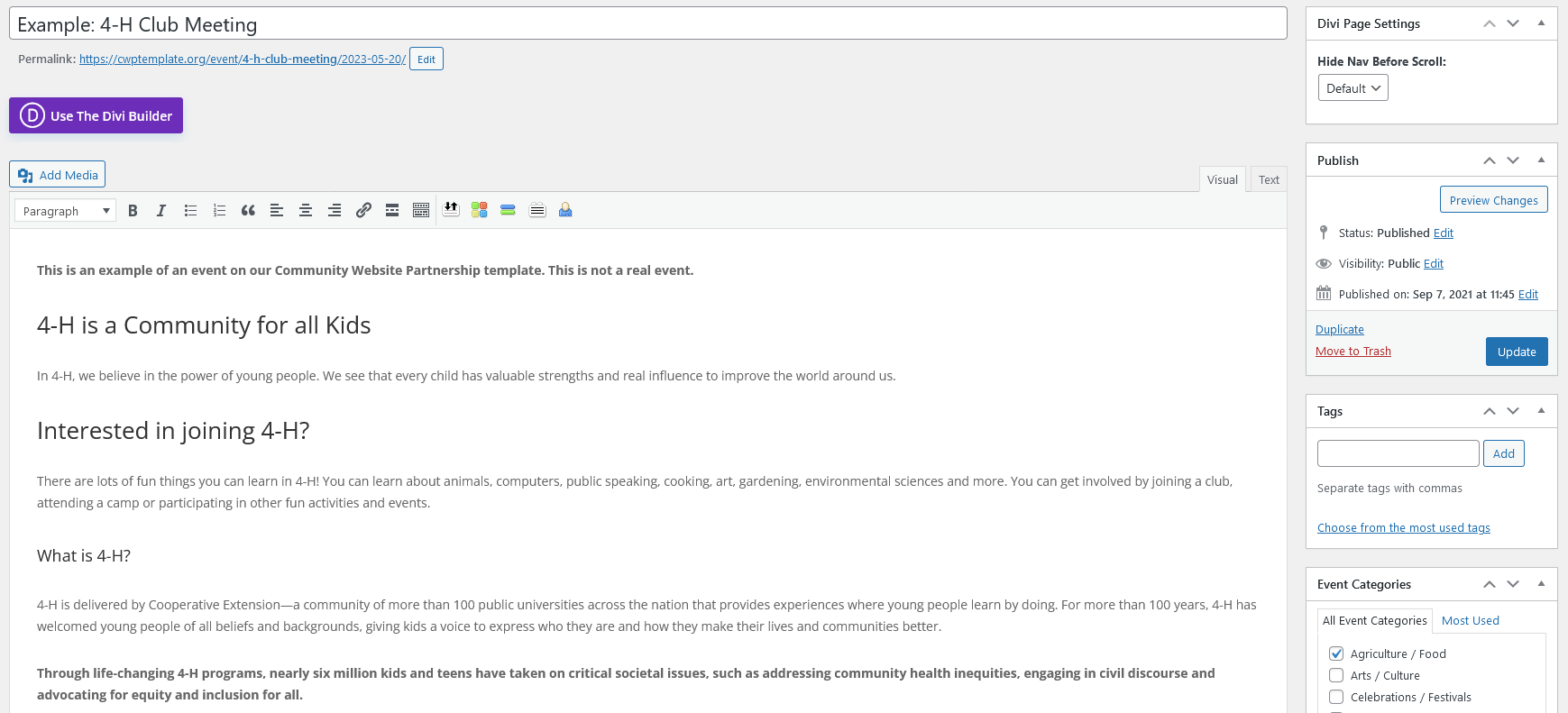Moderation Part 1: Users, Events & Listings
Table of Contents
Click the below links to find the section associated with it.
Removing Spam Users
Content Moderation is the process of reviewing and monitoring user-generated content on online platforms to ensure that they meet certain standards and guidelines. This includes removing inappropriate or offensive content and enforcing community guidelines and terms of service.
Spam is any kind of unwanted, unsolicited digital communication that gets sent out in bulk. For community websites, spam will show up as directory listings, volunteer opportunities or events. To create those spam listings, spam users are created first.
To view the full list of users, log into the Dashboard and on the left side menu, navigate to Users.
What is a Spam User and how do I remove it?
Common traits of spam users are:
- User names have random selections of letters, numbers, and accounts
- First and last names are different than their usernames
- Names seem to represent urban corporate businesses
- First name and last name are the same
- Avatars left of the username look like corporate logos
- Emails are from mail.ru or other suspicious domains. As you remove spam users over time, you’ll become familiar with which domains to look out for.
Sometimes a valid user will be created with one of the above traits. For example, a community website could be near an urban city and occasionally have larger businesses create listings. Or an organization looking to create an account accessed by multiple people would put in something more generic for their first and last names. But most of the time, if a user has at least two or three of the above traits, it is a spam user. Use your best judgement in cases where the lines may be blurry, which will happen very, very rarely. 99% of the time, a user is obviously spam.
To remove a spam user, click the checkbox to the left of that user, then scroll to the top of the page. Click the UM Action dropdown and click Reject Membership, then click Apply. Doing this will prevent that email from being reused later.
Managing Directory and Volunteer Listings
To view the full list of directory listings, log into the Dashboard and on the left side menu, navigate to Directory. To view volunteer opportunities, click Volunteer.
Here you will find a list of all submitted content, including the Title, the Author (the user who created the listing), its categories, and when it was published.
Removing Listings
To remove a single listing, mouse over the listing and click the red Trash text that appears under the Title.
To remove multiple listings, click the checkboxes next to the listing Titles and, at the very top of the page, click the box named Bulk Actions, then select Move to Trash, then click Apply.
Editing Listings
To edit a listing, click the title of the listing.
If you’re familiar with the form for submitting a Directory listing or Volunteer opportunity normally, what shows up will look very familiar. To change categories, check or uncheck the boxes on the right-hand side. To change the user associated with the listing, click the box under Author. To feature a listing so it stays on top, toggle that on under Featured Item.
When you’re done, click the blue Update button at the top-left.
Managing Events
To view the full list of submitted events, log into the Dashboard and on the left side menu, navigate to Events.
Here you will find a list of all submitted content, including the Title, the Author, any Event Categories, the Start and End Dates. If the event shows multiple times, it will have two arrows next to the End Dates.
Removing an event is the same as with the Directory and Volunteer. To edit an event, click the Title.
If you’re familiar with the frontend process of submitting an event, all of those details are here except the description is at the top and the categories are on the side. The rest of the details are below the description, and the featured image is on the sidebar at the bottom.
To feature an event so it sticks out, navigate to Event Options and check the box next to Sticky in Month View and Feature Event.
When you’re done, click the blue Update button at the top-left.






